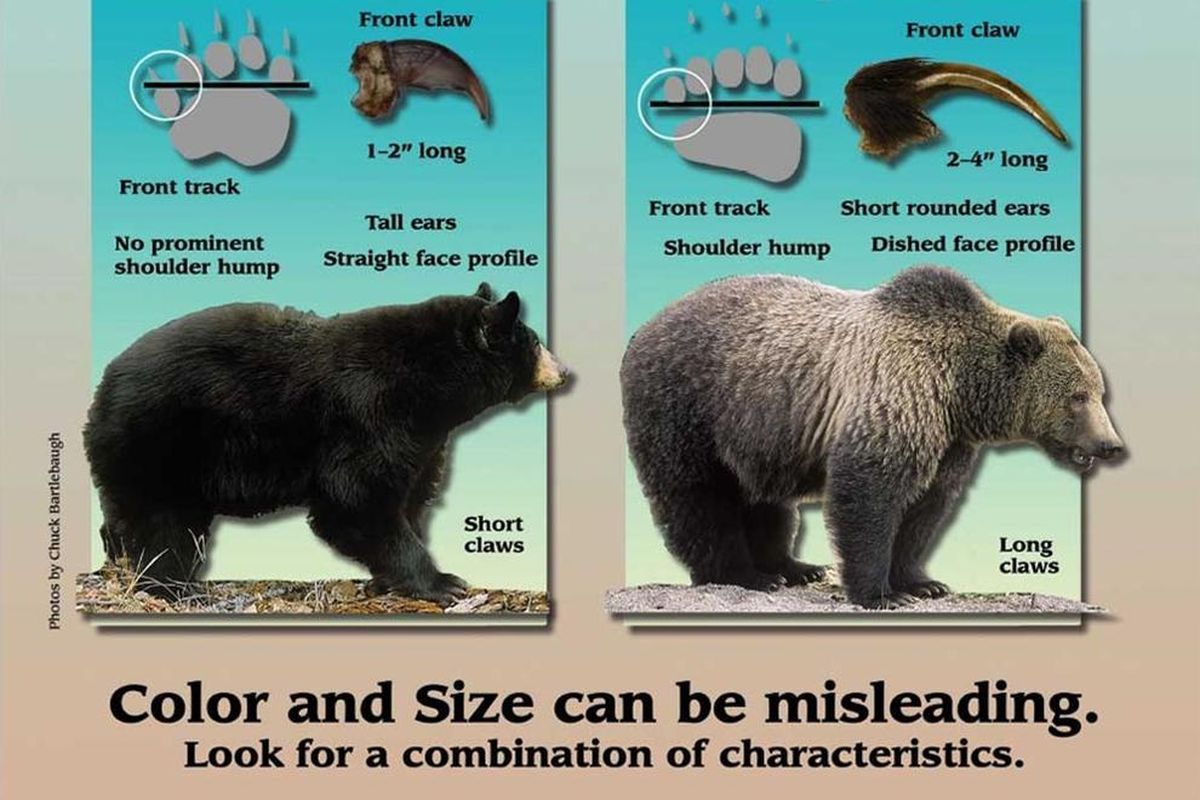Bear attack avoidance tips offered by biologist

Hikers in the Inland Northwest are in carnivore country and should think ahead to what they would do in a close encounter with a bear, wolf or mountain lion, says a wildlife biologist.
Annemarie Prince, a hiker as well as a biologist who works with big game and carnivores for the Washington Fish and Wildlife Department, has been giving presentations to area groups focusing on bear awareness for the safety of outdoor recreationists – and also the bears.
After her presentations, she allows participants to walk outside and practice dispensing bursts of inert contents from bear spray canisters.
Hikers should be alert for clues that indicate a bear might be nearby, including tracks, scat, prey carcasses or even freshly moved boulders, digs or ripped up logs where a bear may have been looking for squirrels or bugs.
“Keep dogs on leash, make noise and hike in a group,” she said in a list of recommended precautions one can take.
Seeing a cub is a clear sign to carefully leave the way you came. It’s not a time to be sneaking in for a photo, she said, noting that momma bear is likely close by.
“If you see a bear first, just quietly back out of there. If it sees you, let it know you’re human. Talk to it. Sometimes bears are just curious. They may stand for a better view.”
Trying to outrun a bear one might encounter in the wild is generally a bad idea, she said. “It can trigger an attack, and if motivated enough they could definitely run you down.”
Prince recited guidelines compiled by bear experts from federal and state wildlife agencies for avoiding an attack if a grizzly or black bear is encountered:
- Do not run.
- Make yourself look big by raising arms and hiking poles.
- Talk quietly to the bear.
- Slowly move toward safety.
- Avoid eye contact with a grizzly but maintain eye contact with a black bear.
If despite these efforts a bear attacks:
- Use bear spray.
- Fall to the ground if a grizzly bear keeps coming, roll onto stomach and clasp hands behind head to protect neck. If it’s a black bear, generally its best to stand tall and seem as threatening as possible.
- If it’s a grizzly bear, play dead.
- If it’s a black bear, generally it’s best to fight back by kicking and punching.
Wolf encounters, mostly fleeting and of no consequence, are increasing in Washington as the population grows, and especially in Idaho where wolves are well-established.
Guidelines for warding off curious or aggressive wolves are similar to those for dealing with black bears as opposed to grizzlies, Prince said.
“Keep eye contact and stomp forward and yell at a wolf to scare it away,” she said. “Throw rocks, yell, wave your arms, and if necessary, bear spray works on wolves.”
Very loud sound devices also can discourage an aggressive predator. Some Alaska guides carry bear spray, guns and small air horns. Sound Grenade, a hand-size portable alarm by Robocopp, emits a 130-decibel alarm by pulling a ring.
Bear spray must be handy on a pack strap for deploying in a second, Prince said. “Everyone in a group should have it,” she added. “Check the expiration date on the label.”
A firearm can be effective in deterring an attack, said Keith Kirsch, Washington Fish and Wildlife Police officer. “But in a high-adrenaline situation, it’s tough to make an accurate shot,” he said. “Then you have a wounded bear that’s angrier than it was before.”
In most cases, bear spray is likely to be more affective in thwarting a bear attack with the added bonus of not killing the bear, he said.
“We just had a case of a shed hunter who was charged by a black bear,” Kirsch said. “He used his handgun and killed the sow. I’m not making any judgments on that decision, but now we have two cubs to try to rehabilitate.”
Prince was measured and professional in her discussion of using bear spray on grizzly bears, wolves and cougars. But her eyes got bigger and she was more animated when someone asked her which animal she feared most while working in the woods.
“Moose,” she said. “Especially a cow moose with a calf. Very unpredictable.
“If she lays down her ears and curls her lips, you’re in trouble. Look for a tree to get behind and use as a shield. Bear spray will work if needed. Moose aren’t to be taken lightly.”